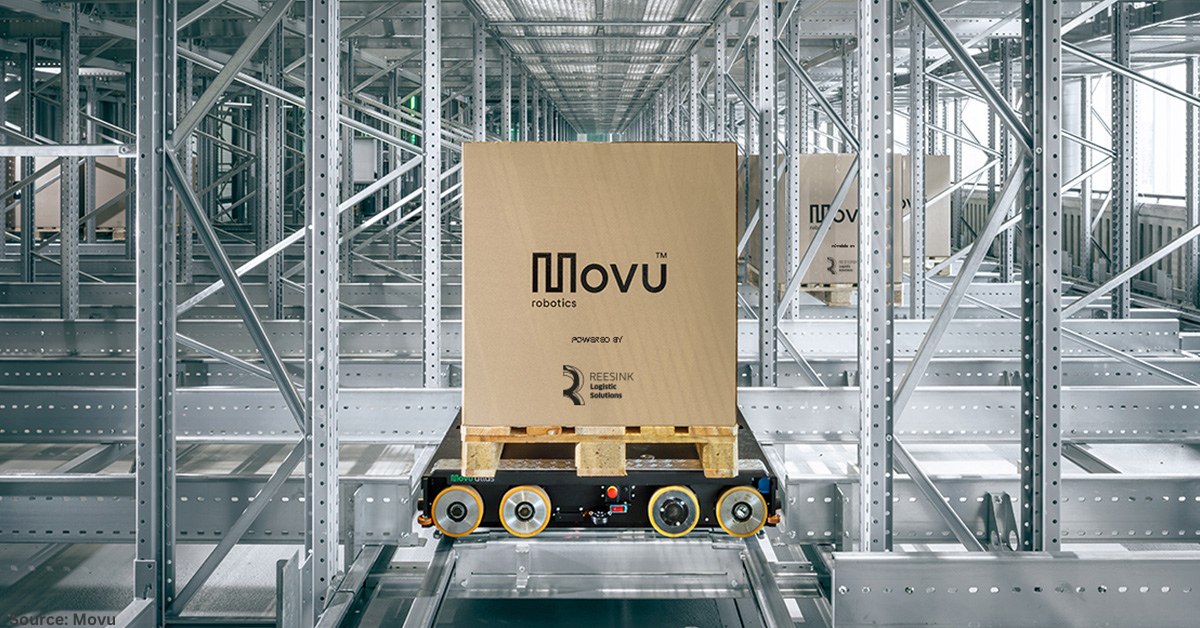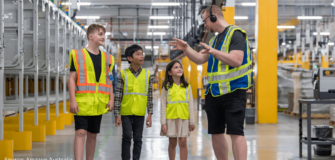The local warehousing sector is set for substantial growth in the next five years and is expected to achieve a compound annual growth rate (CAGR) of 9.3% by 2030.
Jason Wu, Business Development Manager for AutoStoreTM Australia and New Zealand – the global manufacturer of a best-in-class cube-based goods-to-person Automated Storage and Retrieval System (ASRS) – believes that the companies who will take home the biggest slice of the pie are those whose warehouses are equipped to adapt to changing market demands.
Check out: Everything You Need to Know About Warehousing
Understanding the market changes
The rapid rise of eCommerce is a major driver for the sector’s growth. According to Australia Post’s 2022 Inside Australian Online Shopping Report, Australians spent a record-breaking $62.3 billion online in 2021 – representing a 19.3% share of total retail sales. “The research is clear: Australians are going to shop online more frequently, and will be spending more each time,” says Wu.
To meet the growing demand for products that can be delivered faster than ever before, businesses need to invest in warehouses with greater capacity (ideally, situated closer to customers), as well as the tools that make the picking and packing of orders more efficient. “But it’s not so simple. Companies are faced with significant challenges, including the rising cost of energy and other resources, growing pressure to go green, as well as the scarcity and high cost of warehouse space. They’re also grappling with labour shortages,” notes Wu.
Can your warehouse tackle these challenges?
1. Increased demand for direct-to-consumer (DTC) fulfilment: Businesses are seeking out warehouse spaces closer to customers – in urban centres or close to residential zones – to facilitate faster fulfilment and reduced delivery costs. “If your business already has logistics capabilities, or a retail store network, you won’t need to rely on third party logistics providers to close the fulfilment loop,” notes Wu. He points to Nike’s model, which allows online shoppers to collect their purchases at stores, enabling DTC fulfilment without the need for a last-mile service provider.
2. Labour shortages and increasing labour costs: The repetitive, manual nature of warehouse work makes the sector less appealing to workers. “The introduction of robotics and automation technology is a viable remedy. While the upfront costs associated with implementation might seem prohibitive, these solutions reduce your reliance on human workers, while also boosting your productivity and efficiency,” explains Wu.
3. Pressure to go green: This pressure is coming from two sources: from customers who are increasingly aware of their impact on the environment and are demanding that businesses adopt more sustainable practices. And, from business leadership, who are seeking out cost-cutting solutions. “Taking into consideration the climbing costs of energy, it’s not surprising that 55% of the warehousing business leaders we surveyed cite energy efficiency as their top priority,” says Wu.
Outdoor apparel company, Patagonia, has long prioritised ‘green operations’ as part of its ethos. Its investments in green technology – such as solar tracking skylights designed to reflect natural daylight into their building – yielded ROI in just 14 months. In fact, those investments are now saving them money, by reducing their requirement for lighting. “Evaluate every element of your warehouse design, to find opportunities to go green. You’ll reduce your green footprint and lower operating costs,” adds Wu.
4. The climbing cost and low availability of space: Warehouse space is in high demand and low supply (especially in metros). “Almost half of the business leaders we surveyed highlighted that space savings is critical to their business,” says Wu. This is prompting warehouse operators to look for ways to optimise the space they have available. Retailers, such as Walmart in the USA, are converting their existing stores into mini warehouses, to address the problem. Cube storage offers a possible solution, as it allows for the optimisation of warehouse space without the need for expansion. Retail Norway (an operator of duty-free shops in Norway’s airports) implemented an AutoStore cube storage system in its warehouse and achieved a 64% increase in storage capacity. “The cube storage system is modular, making it easily scalable and flexible. It provides four times the storage capacity within the same footprint,” says Jason. This makes it ideal for use in urban settings, where warehouse space is limited and costly.
Automation tops the list of smart strategies for success
“Automation is the quickest, most impactful solution to many of the challenges facing warehouses. It’s the key to smart space utilisation and stock management, operational efficiency and improved productivity,” says Wu.
He points to the findings of AutoStore’s recently released Warehouse Automation State of the Market Report 2023, which surveyed 300 C-level business leaders in warehouse management and found that 9 in 10 organisations have – or are planning to install – automation technology in their warehouses. “56% plan to deploy this technology in the next 12 months with many organisations acknowledging that the uptake of automation technology enables a proactive response to growing market demands.”
The 2022 McKinsey Global Industrial Robotics Survey echoes these findings, reporting that automated systems will account for 25% of capital spending over the next five years. “Of this, the retail and consumer goods sector are set to be the biggest spenders, with 23% of these survey respondents planning to spend more than $500 million.”
Australian businesses stand to benefit from the expansion opportunities that arise as a result of the development of global supply chains. “To achieve success, warehouses will have to optimise storage capacity and embrace automation to realise the cost reductions, sustainability, efficiency and speed to market that’s expected,” concludes Wu.























































Follow us on social media